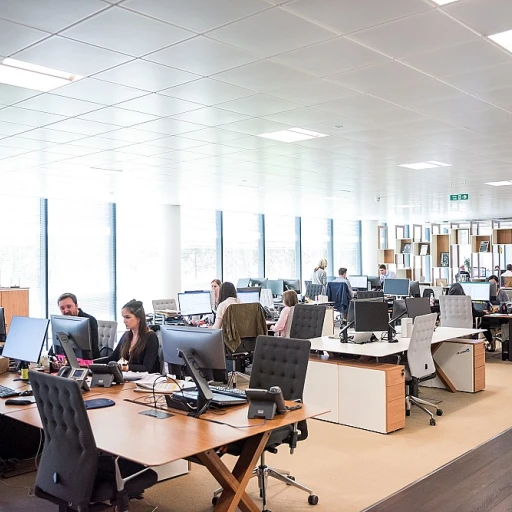
Understanding Remote Desktop Technology
Getting to Grips with Remote Desktop Technology
Understanding remote desktop technology is crucial for anyone looking to navigate the modern landscape of remote work. At its core, this technology allows you to access a computer from a distant location, giving you control over its screen and resources as if you were physically present. This access is facilitated by remote desktop software, which creates a bridge between your local device and the remote computer through an internet connection. To initiate a remote desktop connection, you typically need to enter the remote computer's IP address and have the necessary login credentials. Software like Windows Remote Desktop or Chrome Remote Desktop can guide you through this process with a few simple steps. Just connect, click, and you'll be able to perform desktop work seamlessly from afar. However, effective use of remote desktops doesn't just stop at a software download. There's a hidden complexity involving the network, specifically how the local and remote devices communicate over the internet. Network settings, such as port forwarding, VPN connections, and more, can significantly influence the reliability and security of your desktop connection. As the role of remote work expands, so does the need for robust connectivity solutions. This calls for an insight into intelligent network management to optimize performance and ensure seamless access. You might find more detailed information on enhancing this aspect of remote work here. It's essential to remember that not just any device will do when it comes to remote desktops. The connection relies heavily on having compatible software and a dependable internet connection. Without both, accessing your work computer remotely can be quite challenging. In subsequent sections, we'll explore how indispensable Wi-Fi can be in maintaining desktop connectivity and discuss alternative methods to ensure a secure and efficient remote desktop work experience.The Role of Wi-Fi in Remote Desktop Connections
Importance of a Stable Connection for Remote Access
Remote desktop access has become an integral part of current work environments, allowing users to connect to their work computers from almost any location. At the heart of this desktop connection lies the internet connection, where Wi-Fi often plays a crucial role. However, the strength and stability of your Wi-Fi connection can significantly impact your desktop work experience.
The process of establishing a remote desktop session typically involves connecting to a server through specialized remote desktop software. This software allows users to access computers securely by transmitting screen, keyboard, and mouse inputs over a network. This makes a reliable internet connection via Wi-Fi paramount for consistent performance.
Comparing Wi-Fi to Other Connectivity Options
While Wi-Fi is one of the most popular choices for remote access, not all Wi-Fi networks are created equal. Factors such as bandwidth, interference, and distance from the router can affect the performance of remote desktops. If the signal is unstable, users might experience lag, screen delays, or even disconnections during their desktop work.
It's essential to select a reliable Wi-Fi connection to ensure seamless remote connections. If you need to connect from various devices like a chrome remote connection on a windows computer, ensuring that your Wi-Fi is capable of handling the traffic can make a significant difference. For those working from cafes or public spaces, understanding these nuances can avoid potential disruptions. Learn more about the impact of network interface devices in optimizing remote access.
Alternatives to Wi-Fi for Remote Desktop Access
Exploring Wired Connections for Remote Desktop Access
While Wi-Fi is a common choice for remote desktop connections, exploring alternatives can be crucial in scenarios where stability or speed is a concern. Wired connections can serve as reliable alternatives to ensure seamless remote computer access.
1. Ethernet Connection: Opting for a wired Ethernet connection can significantly enhance stability and speed when accessing a remote desktop, compared to a wireless network. Connecting your windows computer directly to the router minimizes latency and packet loss.
2. Mobile Data Tethering: In situations where traditional broadband isn't available, using your mobile device’s data connection via tethering can serve as a viable backup. Though not ideal for extensive desktop work due to data limits and potential costs, it can provide interim access to remote computers.
3. VPN and Secure Networks: Establishing a VPN connection across secure, wired networks can enhance both security and performance. VPNs not only encrypt your internet traffic but also help in bypassing network restrictions that might otherwise block remote desktop software.
For those working in environments where tech infrastructure is evolving, understanding the need for alternative connectivity options is vital. If you aim to maximize productivity while exploring compensation opportunities, understanding global mobility compensation packages for remote workers could be beneficial.
Security Concerns with Different Connectivity Options
Safeguarding Your Remote Desktop Connections
When it comes to remote desktop access, ensuring the security of your connection is paramount. As you connect to a remote computer, several security concerns can arise, particularly when using different connectivity options such as Wi-Fi or other internet connections. Understanding these concerns can help you make informed decisions to protect your work and data.
Firstly, using a secure network is crucial. Public Wi-Fi networks, for instance, are often unsecured and can expose your remote desktop connection to potential threats. Hackers can easily intercept data transmitted over these networks, leading to unauthorized access to your remote computer. To mitigate this risk, consider using a VPN connection, which encrypts your data and provides a secure tunnel for your internet connection.
Another important aspect is the use of strong authentication methods. Implementing multi-factor authentication (MFA) adds an extra layer of security by requiring additional verification steps beyond just a password. This ensures that even if your password is compromised, unauthorized users cannot easily access your remote desktop.
Additionally, keep your remote desktop software up to date. Software developers frequently release updates to patch security vulnerabilities, so regularly updating your software is a critical step in maintaining a secure connection. This applies to both your remote access software and your operating system, whether it's Windows or another platform.
Port forwarding is another area to be cautious about. While it allows you to access your remote computer from outside your local network, it can also open up potential security risks if not configured correctly. Ensure that only necessary ports are open and consider using dynamic port forwarding to minimize exposure.
Finally, be mindful of the security settings on your remote desktop software. Most remote desktop applications, like Chrome Remote Desktop, offer various security features that you can enable to enhance protection. These might include screen blanking, clipboard redirection control, and session timeout settings.
By addressing these security concerns, you can continue to enjoy the flexibility of remote desktop connections without compromising the safety of your work and data. As you optimize your remote desktop performance, keep security at the forefront to ensure a seamless and secure remote work experience.
Optimizing Remote Desktop Performance
Improving the Speed and Reliability of Your Remote Desktop Experience
Using a reliable internet connection is crucial for ensuring that your remote desktop experience remains smooth and efficient. Here are some considerations and tips to optimize your remote desktop performance:- High-Speed Network: It’s essential to have a high-speed internet connection to minimize lag and delays when you access a remote computer. Consider upgrading your service if your current network speed disrupts your desktop work.
- Dedicated Network for Work: Reduce network congestion by dedicating a specific network for your remote work. This can prevent bandwidth competition from other devices and ensure consistent connectivity.
- Adjust Display Settings: Reducing the resolution of your remote desktop screen and decreasing color depth can help enhance performance. Streamlining these settings can result in fewer data packets needing to travel across your network, expediting the overall desktop connection.
- Utilize Wired Connections: Whenever possible, connect through an Ethernet cable instead of Wi-Fi. A wired connection provides more stability and typically faster data transfer rates than a wireless setup.
- Implement Quality of Service (QoS): If your router supports it, enable QoS settings to prioritize traffic related to your remote connections over less critical network activities.
- Close Unnecessary Applications: Ensure that bandwidth-heavy applications are closed on both the local and remote computers. Applications running in the background can consume significant computational resources, affecting the responsiveness of your session.
- Consider Using a VPN Connection: Although primarily for security, VPNs can also affect your network's latency. Ensure the server address you connect to is nearest to your location to optimize for speed.
- Server Optimization: If you have control over the server, verify that the server hardware is up to date and capable of handling multiple simultaneous remote access sessions without degrading performance.












